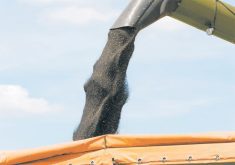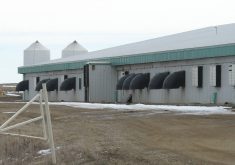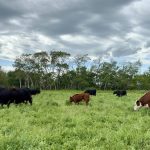Respect nature’s tether in gene editing debate
This is a reply to the WP editorial in the Dec. 16, 2021, issue: “Gene editing another necessary tool for farmers.”
I welcome the efforts made by the article’s authors to lay out some facts regarding the dawn of agriculture and its subsequent effects on humanity. The statement that changes were “mostly for the better” is relative, and tends to gloss over or even brush aside any negatives, which are largely social or human factors.
Read Also

Farm groups are too amiable with the federal government
Farm groups and commodity groups in Canada often strike a conciliatory tone, rather than aggressively criticizing the government.
Social stratification was not entirely absent in human populations before the dawn of agriculture, but nature itself kept a lid on it. Once it got a foothold and developed efficiency, agriculture blew that lid off. City states started to emerge, kings’ ambitions had few limits, and privileged upper classes spread, rooted in new social and religious developments.
Why? Because it could — the human factor. Consistently at the bottom were those given the task to do the work that kept the new reality afloat — farmers producing food.
In an effort to fast forward to the topic in question, it becomes of utmost importance to do it with a heightened level of awareness and the benefit of hindsight.
The evolution of plant breeding, from the impossible-to-exactly-pinpoint start to the present, was done throughout the millennia with one safety factor moving along with it — nature’s tether.
We are talking about severing nature’s tether.
In conclusion, let’s use our awareness to reflect. The kings of bygone millennia, who owed their existence to agriculture, showed very marginal concern for their farmers. Power bases and human aspirations have evolved with the times, portions of it in lock-step with the evolution of agriculture.
The one thing that hasn’t changed is the fact that humanity’s primary concern is still to have sufficient food.
If the knives of the policy-makers sever nature’s tether and make gene editing a done deal, there will be echoes from long bygone kings’ courts in boardrooms across major food-producing nations. Concerns for farmers will be marginal at most.
The punch line, accusing people of interfering with safe and proven science, is overused, wearing thin and simply not true to all facts.
Peter Schmutz,
Rocky Mountain House, Alta.
Gene edited regulations just needless repetition
Lucy Sharratt and the Canadian Biotechnology Action Network may benefit from an historical review.
When genetically modified organisms were first introduced to agriculture as Plants with Novel Traits, the safety review was entrusted to the Seed Section of Agriculture Canada’s Plant Products Division.
The initial event was the addition of Bacillus thuringiensis to corn. The objective was to protect corn from the corn borer, a pest that burrows into the stalk of the corn plant, creating a pathway for invasive diseases that caused stalk rot, plants falling over and yield loss.
The process for approval was lengthy and costly, but the traited varieties worked well. This was followed by the introduction of herbicide tolerance to corn, soy and canola.
The benefits are evident: reduced field work, higher yields and greatly reduced carbon footprint.
Canadian taxpayers have already paid for the safety assessments, and it is clear the process does not need repetition for gene edited crops.
Comfort can also be taken in the realization that after 20 plus years of producing GMO crops, worldwide there has been no evidence of harm. And finally, with the realization of the need to feed the world’s billions, we need the power of science to play its role.
Martin C. Pick,
Cavan, Ont.














